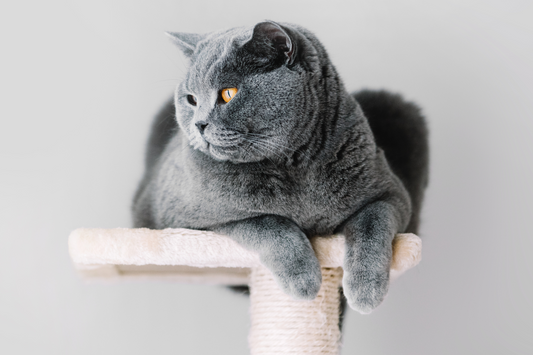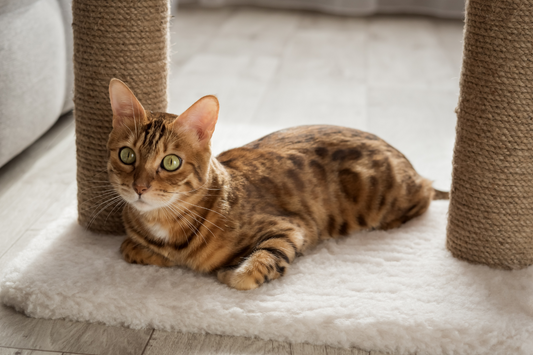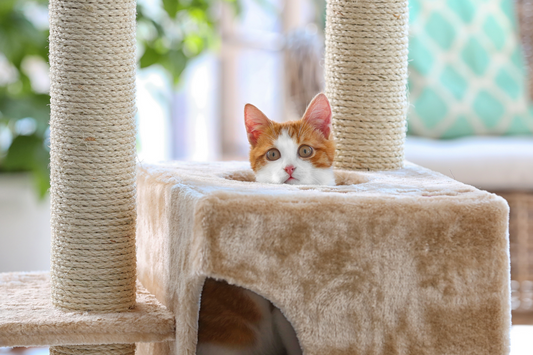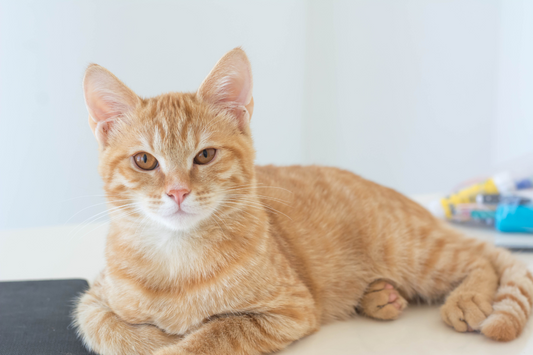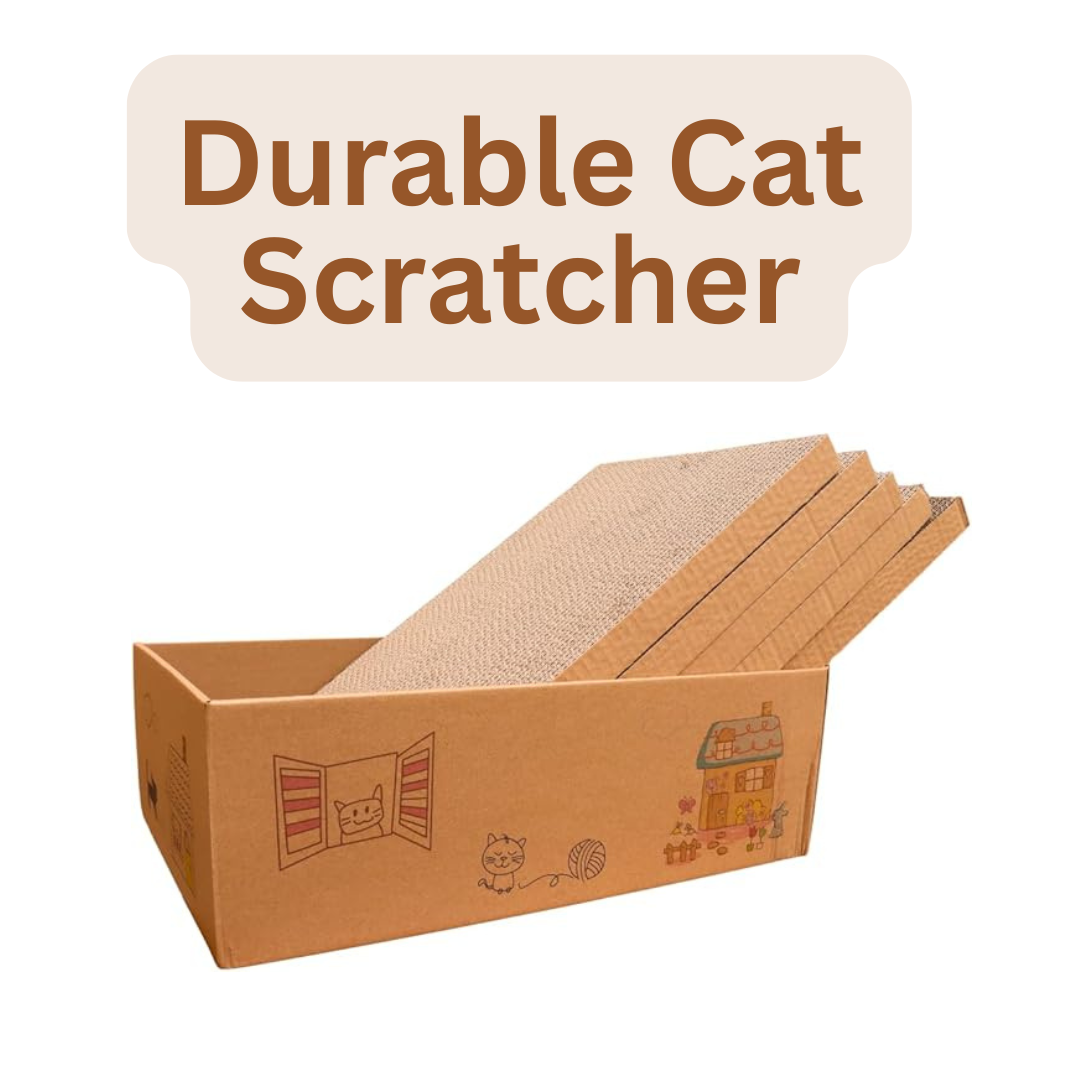
If you’ve spent any time in the pet aisle or browsing online for cat accessories, you’ve likely come across corrugated cardboard scratchers. These lightweight, recyclable, and surprisingly satisfying scratching surfaces are a go-to for cat owners around the world. They’re often budget-friendly and widely available, but one common concern remains: how durable are they really?
Despite their simple construction, corrugated cardboard scratchers often last longer than expected—especially when used properly and chosen wisely. In this blog post, we’ll dive into what makes them durable (or not), how they compare to other materials, and how to get the most out of your cardboard scratcher.
Understanding Corrugated Cardboard Scratchers
Corrugated cardboard scratchers are made from multiple layers of fluted paper glued together to create a strong, ridged texture. This texture mimics tree bark in some ways, providing the resistance and grip that cats naturally seek when scratching.
They come in a variety of shapes and styles—loungers, vertical pads, ramps, circles, and more—and some even include catnip to attract reluctant scratchers. But their appeal lies not just in affordability and availability, but in how effectively they satisfy feline instincts.
Why Durability Matters
Before we get into what makes some corrugated scratchers more durable than others, it’s important to understand why durability is a big deal:
- Cost Efficiency: A longer-lasting scratcher means fewer replacements and more savings over time.
- Environmental Impact: Though recyclable, tossing scratchers frequently still creates waste. A durable scratcher reduces environmental footprint.
- Behavioral Reinforcement: If your cat grows attached to one scratcher, consistency helps reinforce positive scratching habits.
What Affects the Durability of Corrugated Cardboard Scratchers?
While cardboard might not seem like the sturdiest material, several factors can influence how long a corrugated cardboard scratcher will last:
1. Layer Thickness and Density
Not all cardboard is created equal. High-quality scratchers use thicker and denser layers of fluted paper. This provides more resistance to scratching and slows the rate of wear and tear.
Cheap scratchers often use loosely packed, thin cardboard, which disintegrates quickly, leaving a mess and prompting faster replacement.
2. Glue and Bonding Quality
Durability is also determined by how well the layers are bonded. Strong adhesives ensure the layers hold up against repeated scratching, digging, and even biting.
Inferior bonding causes the scratcher to break apart prematurely, leading to large chunks falling off or layers separating.
3. Shape and Design
Certain designs—like wave or incline scratchers—allow cats to spread out their scratching, preventing concentrated wear in a single area. Others, like circular scratchers or lounges, provide multiple access angles and sometimes a 360-degree surface for scratching.
More surface area = more durability.
4. Frequency of Use
Naturally, the more your cat uses the scratcher, the quicker it will wear out. But that’s not necessarily a bad thing—it means your scratcher is doing its job and keeping claws off your furniture!
Still, scratchers in multi-cat households will wear faster than those used by a single feline.
5. Location in the Home
Placement matters. Scratchers that sit near a cat’s favorite napping spot or along high-traffic areas get more use. But if placed in a humid area (like near windows or in a damp basement), the cardboard can degrade faster due to moisture absorption.
Keep scratchers in dry, climate-stable environments for maximum lifespan.
Average Lifespan of Corrugated Cardboard Scratchers
So, how long can you expect one to last?
- Light use (single cat, occasional scratching): 2 to 4 months
- Moderate use (daily scratching): 1 to 2 months
- Heavy use (multiple cats or enthusiastic scratchers): 2 to 4 weeks
Higher-quality options can last significantly longer—sometimes up to 6 months or more—especially if you rotate or flip the scratcher when one side wears out.
Tips to Make Your Corrugated Scratcher Last Longer
Even the best scratchers wear out eventually, but a few tricks can extend their usability:
✅ Rotate or Flip Regularly
Most cardboard scratchers are double-sided. Once one side wears down, flip it to extend the life by another few weeks.
✅ Vacuum or Shake Off Debris
Regular cleaning helps preserve structure. Removing loose debris also prevents your cat from avoiding it due to mess or smell.
✅ Encourage Even Use
Place toys or catnip on less-used areas of the scratcher to spread out the wear and avoid one “bald spot” forming.
✅ Store Extras in a Dry Place
If you buy in bulk, keep spares in a dry, sealed container to prevent moisture damage and preserve their quality.
Corrugated vs. Other Scratcher Materials
How do cardboard scratchers stack up against other types?
| Material | Durability | Cost | Eco-Friendly | Maintenance |
|---|---|---|---|---|
| Corrugated Cardboard | Moderate | Low | High | Easy |
| Carpet | High (with wear) | Moderate | Low | Traps dirt |
| Sisal Rope | High | High | Moderate | Medium effort |
| Natural Wood | Very High | High | High | Easy |
| MDF/Wood Composite | High | Moderate | Moderate |
Easy |
Corrugated cardboard holds its own in terms of cost and eco-friendliness, and with proper care, it competes well on durability—especially considering its affordability.
When to Replace a Cardboard Scratcher
Even the toughest scratcher won’t last forever. Here’s how to know it’s time for a new one:
- Loose flakes or chunks fall off regularly
- Your cat avoids using it
- It’s flattened or lacks texture
- It begins to smell or absorb odors
- Structural integrity is compromised (bends or collapses)
Replacing worn scratchers on time keeps your cat engaged and ensures they don’t turn to your couch or carpet.
Final Thoughts: Surprisingly Durable, Incredibly Worth It
Corrugated cardboard scratchers may not have the prestige of hardwood or the luxury of sisal towers, but when it comes to cost-effectiveness, sustainability, and feline satisfaction, they deliver tremendous value.
When chosen carefully and maintained properly, they can be remarkably durable, providing months of healthy scratching and claw care. Their lightweight nature makes them easy to move, replace, or recycle, and their wide availability means there’s always a style to fit your cat’s personality and your home décor.
So next time you're looking for a reliable scratching solution, don’t underestimate the humble cardboard scratcher. It may be simple, but it’s scratching perfection in the eyes of your cat.
Do you have a go-to brand or a tip for getting the most out of your cardboard scratcher? Share your thoughts and experiences in the comments—we love hearing from fellow cat lovers!
